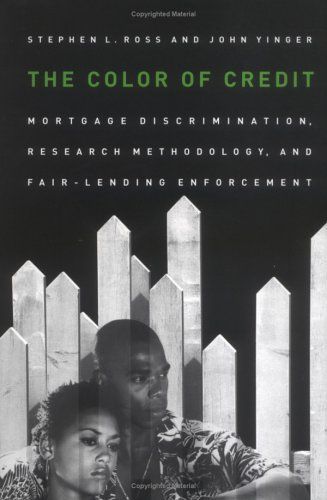
The Color of Credit Mortgage Discrimination, Research Methodology, and Fair-lending Enforcement
An analysis of current findings on mortgage-lending discrimination and suggestions for new procedures to improve its detection. In 2000, homeownership in the United States stood at an all-time high of 67.4 percent, but the homeownership rate was more than 50 percent higher for non-Hispanic whites than for blacks or Hispanics. Homeownership is the most common method for wealth accumulation and is viewed as critical for access to the most desirable communities and most comprehensive public services. Homeownership and mortgage lending are linked, of course, as the vast majority of home purchases are made with the help of a mortgage loan. Barriers to obtaining a mortgage represent obstacles to attaining the American dream of owning one's own home. These barriers take on added urgency when they are related to race or ethnicity. In this book Stephen Ross and John Yinger discuss what has been learned about mortgage-lending discrimination in recent years. They re-analyze existing loan-approval and loan-performance data and devise new tests for detecting discrimination in contemporary mortgage markets. They provide an in-depth review of the 1996 Boston Fed Study and its critics, along with new evidence that the minority-white loan-approval disparities in the Boston data represent discrimination, not variation in underwriting standards that can be justified on business grounds. Their analysis also reveals several major weaknesses in the current fair-lending enforcement system, namely, that it entirely overlooks one of the two main types of discrimination (disparate impact), misses many cases of the other main type (disparate treatment), and insulates some discriminating lenders from investigation. Ross and Yinger devise new procedures to overcome these weaknesses and show how the procedures can also be applied to discrimination in loan-pricing and credit-scoring.